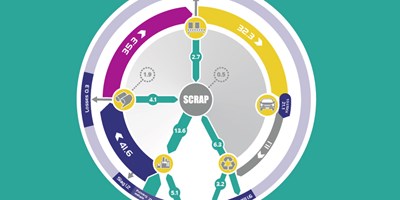The Global Life Cycle of Stainless Steels has recently been published by Team Stainless. The article is a summary of the results of a study which quantifies the stocks and flows cycle of stainless steels. Conducted by Barbara Reck, Senior Research Scientist at Yale University, the study Comprehensive Multilevel Cycle of Stainless Steel in 2015 concluded that on average, 85% of stainless steels are recycled once they reach their end of life, either to become new stainless steels (56%) or a valuable iron source for carbon steels (29%).
The study also considered the recycled content of stainless steels (the amount of scrap used in the production of new stainless steels). Globally, the average recycled content of stainless steel was 44% (32% stainless steel scrap and 12% carbon steel scrap). However, there were significant regional differences, for example, in the USA and Europe recycled content of stainless steels was 71% and 70% respectively. The global figure is strongly impacted by China which, in 2015, produced 52% of the worlds stainless steels but contained on average only 23% recycled content. It is likely that this reflects the fact that the availability of scrap stainless steel in China is lower because most in-use stainless steels have not yet reached their end of life.
The study also analyzed end use sector specific end-of-life flows. Household appliances and electronics and metal goods had the lowest yet high end-of-life collection rate at 80%, while building and infrastructure had an 85% end-of-life collection rate and transportation and industrial machinery accounted for the highest end-of-life collection rate at 90%.
Courtesy of Team Stainless.

